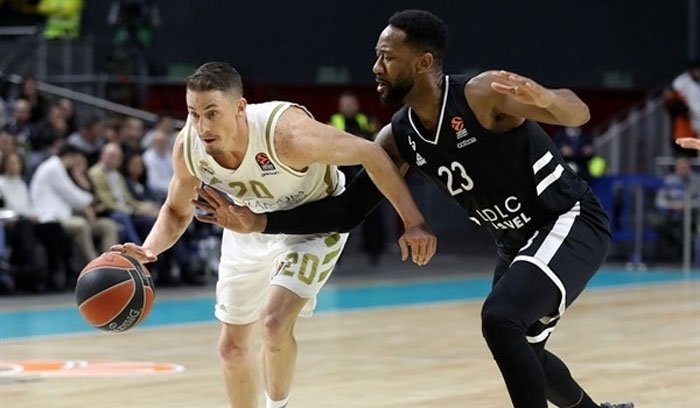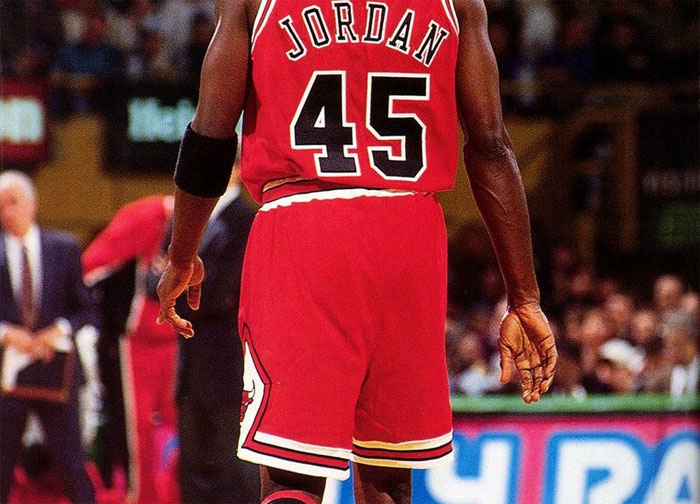Even if you've never heard of this type of foul before, you've properly done or experienced it when playing basketball with friends. Hand-checking means that a defender has placed or illegally kept his hands on an opponent.
Hand-checking occurs when a defender places their hands on an opponent and impedes their movement in the process.
In other words, a referee will award a foul when a defender checks and impedes an opponent from moving. What is hand checking? Is there a penalty for hand checking? This article covers all you need to know about the hand-checking rule.
What does Hand-Checking in the NBA mean?
According to the NBA's rule book, defenders are prohibited from placing their hands or grabbing an opponent.
In simple layman's terms, an official will award a foul when a player extends their hands and impedes an opponent's movement. You'll find this foul in the official NBA rules under the NBA’s official page.
A defender can briefly touch an opponent's hand, but the action must not impede the movement of the opponent. However, the NBA made an exception to this rule. Players can hand-check an opponent only if that opponent is in the basket-near area with his back facing the basket.
How Does the NBA Punish Hand Checking?
Hand checking counts as a personal foul, and it also counts in the team's total foul count. A player could get his team in big trouble if they don't discipline themselves to resist hand checking.
However, if the team that commits the foul has over five personal fouls in a period, the opposition team is in the bonus and will get the chance to shoot free throws.
Also, if a player individually fouls six times during a game, the referee will call a "foul out" and instruct the player to leave the game. The player can, however, watch the match from the bench unless the official dismisses him entirely.
When Was the Hand-Checking Rule Introduced?
In the past, hand-checking was an excellent defensive tactic that defenders used to impede the movements and speed of opponents. The hand check rule, however, completely changed the game. The hand check rule now forces players to work more on their skills and keep defenses honest.
During the 2004-2005 NBA season, the NBA introduced the hand-checking rule to call blocking fouls and implement the three-second defensive rule.
How Did the Hand Check Rule Change the NBA?
You'll hear many fans say the game has become softer since the hand check rule was introduced. Most fans also complained that the rule ruined the beautiful game they enjoyed. However, let's have a look at the game before and after the introduction of the rule.
Past Basketball Games
If you've been an NBA fan for a long time, you'll probably remember that tall, giant-looking players dominated the NBA.
In addition to that, you'll also find a lot of giants playing in the center position at that point. Historically, NBA fans remember that in order to win the championship, one had to have a great center.

During that period, the pace of the game was slower, and perimeter play was still a work in progress.
The executives allowed hand-checking which was vital in the game. The defense was rougher, and you'd need more than just your skill to get past the center. There were a lot of hand-checking situations that were allowed at that time which are entirely against the rules today.
Additionally, offensive players were forced to deal with a rougher defense. They had to rely on quick reflexes to penetrate the opponent's defensive wall.
On the contrary, most offensive players were not overly concerned about getting near the perimeter. This is because many towering players would be there, waiting to stop them. Plus, they wouldn't get any free throws even if they got past a few players.
Additionally, you'll hear a lot of retired players like Scottie Pippen voicing out their discontent for the rule. And how it would have hurt them as players if the rule was introduced during their time.
The Hand Check Rule Change
Michael Jordan played an important role in the creation of the hand-check rule. Of course, Jordan was on the lips of every NBA fan during his prime, and he was the face of the entire NBA.
During the bull's revolutionary attack system, which involved using Jordan and Scott Pippen in the perimeter, the fast perimeter style became a new and attractive style of play.

Of course, most NBA fans wanted to be and play like Michael Jordan as the legend's style was unique from the slow traditional gameplay. The NBA saw a chance to implement this rule when more and more young players adopted this new style of playing.
The federation changed the rules slightly after Jordan retired, which made hand-checking illegal. Most analysts believe that the NBA changed the rules to encourage a perimeter style of play and to avoid losing fans after Jordan retired.
Most players didn't stick to this rule at first. However, the hand-check rule fully came into play when Michael Jordan showed up again.
Jordan's two three-peats changed the game, allowing young players to see that one does not have to dominate the center position to win. The hand check rule officially changed the game following the 2003-2004 season.
The hand-check rule gained popularity among fans and players as old players retired and new players embraced the perimeter style of play.
Conclusion: Hand-Checking Basketball
Whether you think the NBA is now less physical or not, the hand-checking rule does exist. This rule has completely changed the way defenders choose to play ball handlers. Additionally, the hand-check rule prohibits defenders from impeding opponents' movement with their hands.
Although there are many contentious opinions regarding the hand check rule, the rule does make the game more exciting and unpredictable. This rule forces defenders to be more creative, and flexible and they'll have to scratch their heads to look for ways to stop faster players.
You might also like: Everything You Need to Know About the Restricted Area in Basketball
